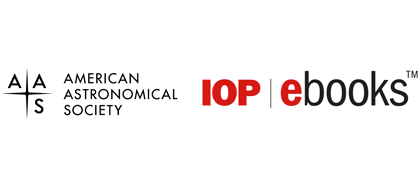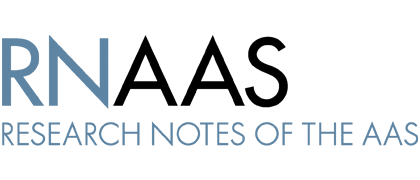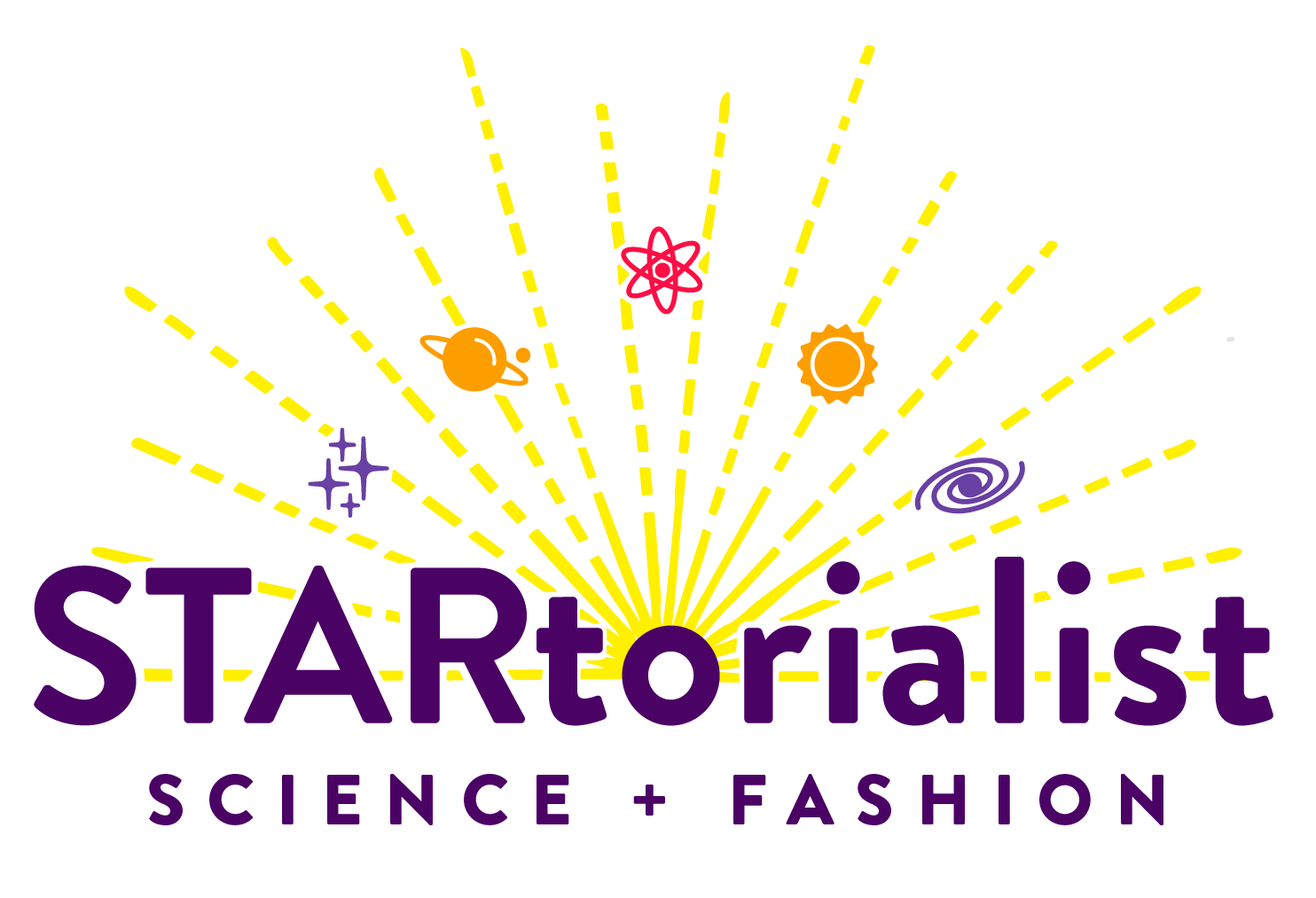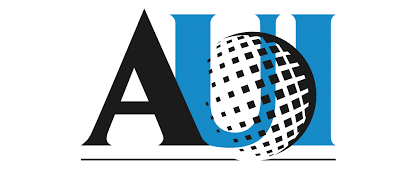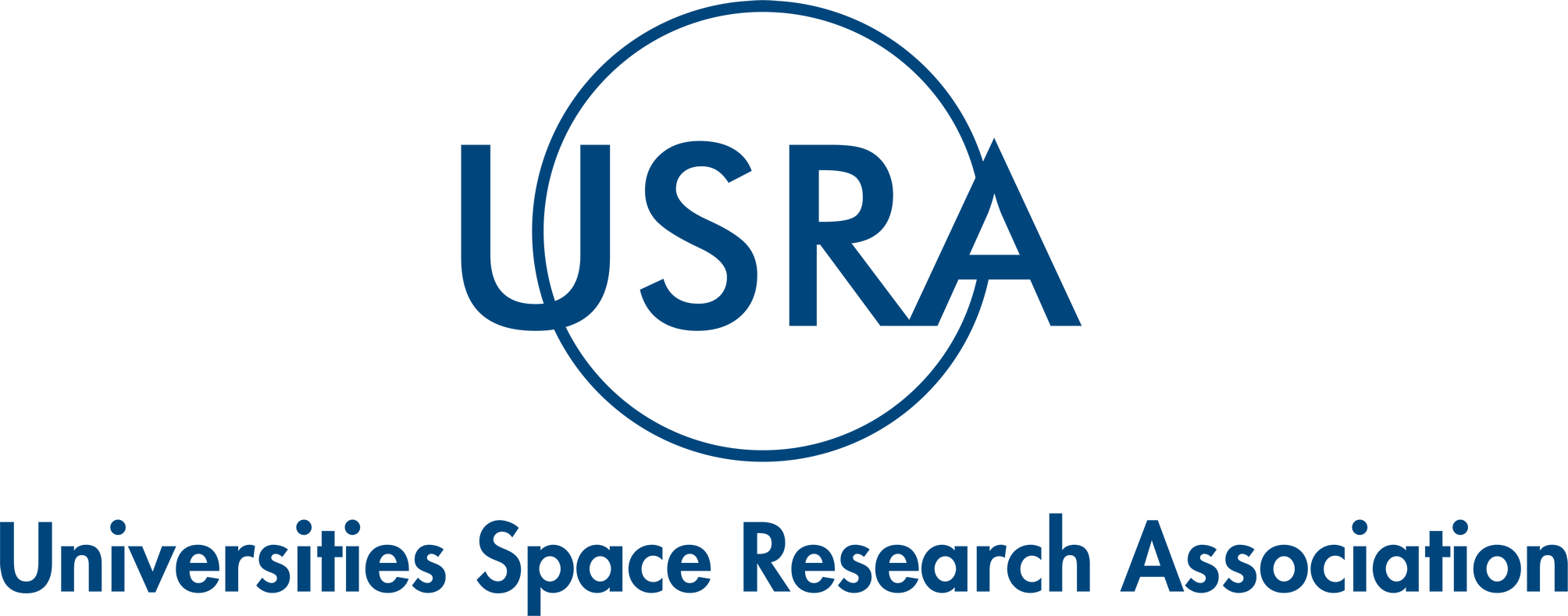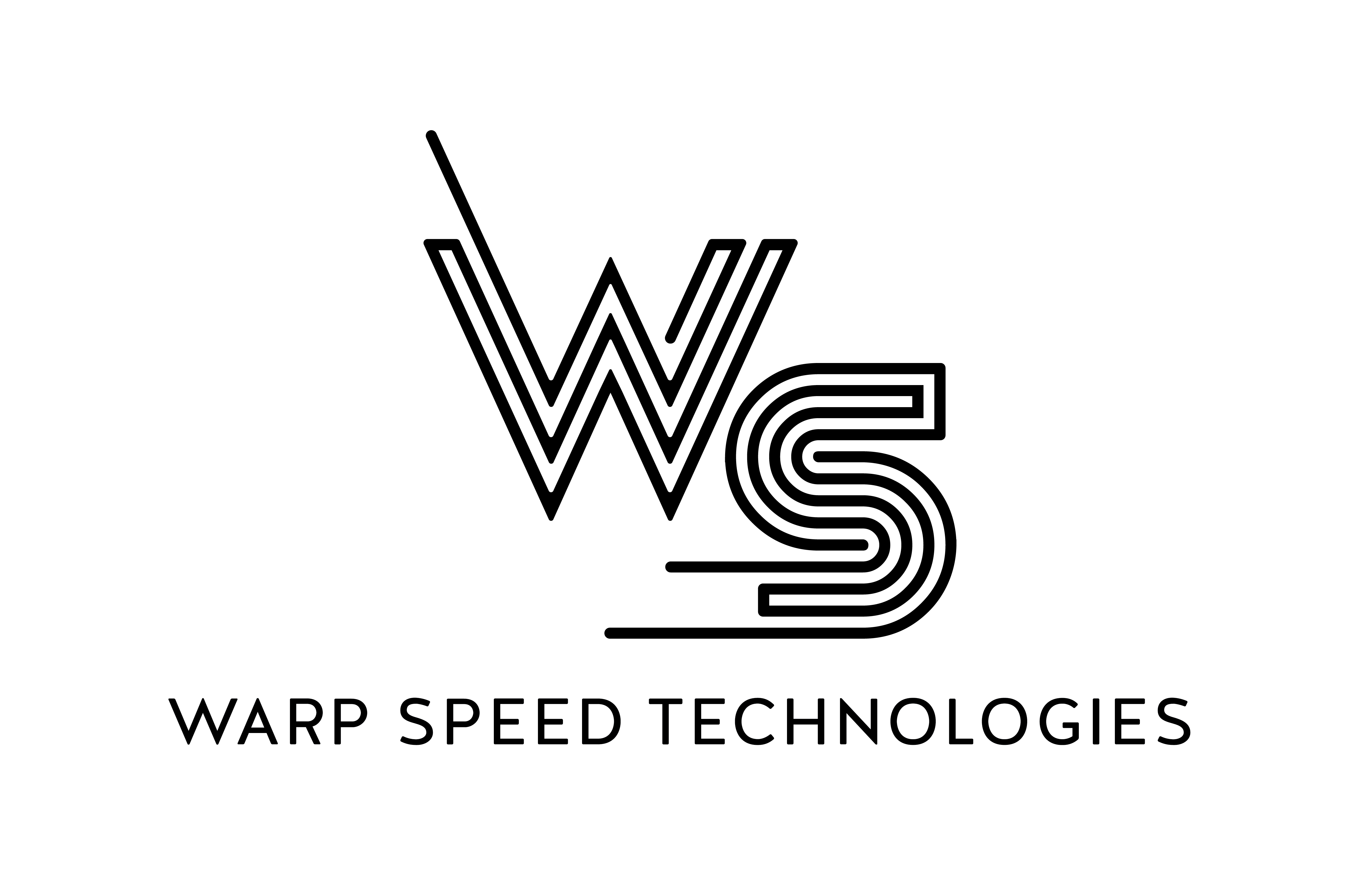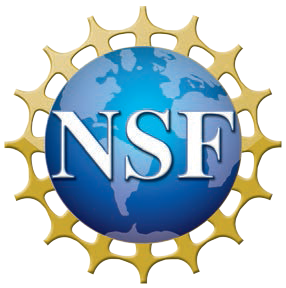236th meeting
Virtual Exhibit Hall


Go to [Monday] [Tuesday] [Wednesday]
**All times specified in Eastern Daylight Timezone
Monday, 1 June 2020
The X-ray sky seen through the Chandra Source Catalog
Francesca Civano (Center for Astrophysics, Harvard & Smithsonian)
Monday, 1 June - 11:00am-11:30am EDT
The Chandra Source Catalog 2.0 (CSC 2.0) includes more than 315,000 unique X-ray sources detected in >10,000 Chandra observations. This catalog allow scientists to perform statistical studies by making use of the extensive set of uniform properties (more than 100 per source) in multiple energy bands and across a broad range of source fluxes.
The catalog includes hundreds of products per source which are both easy enough to be explored by non X-ray expert scientists (e.g., tables of source properties, spectra) and also extremely useful to the most expert X-ray astronomers (merged events files, exposure maps, PSFs). In this live demo, I will showcase how it is easy to browse the sky to find a match for a given target or field using the WWT to explore the CSC 2.0. I will then move to explore the catalog in more details using the CSCview interface, built to browse the tables and retrieve the products associated to the sources and the fields were these were detected. I will show how it is easy to connect our tools to ds9 and TOPCAT using SAMP.
Finding Planetary Data with Exo.MAST
David Rodriguez, STSCI
Monday, 1 June - 11:30am-12:00pm EDT
Are you an extrasolar scientist looking up information on your favorite planets? Learn how Exo.MAST can make your life simpler by providing planet information, quick-look tools, links to external services, and additional results from MAST holdings.
How Can the NASA Exoplanet Science Institute Help YOUR Research?
Dawn Gelino, NASA Exoplanet Science Institute, IPAC, Caltech
Monday, 1 June - 12:00pm-12:30pm EDT
The NASA Exoplanet Science Institute (NExScI, https://nexsci.caltech.edu) supports the broad astrophysics and planetary science communities. Listen in to learn how NExScI can support YOUR research!
Do you need observational data?
Learn how to apply for 10-meter Keck telescope time and use the Keck Observatory Archive (KOA) to access all data acquired with these two telescopes since they began operations over 26 years ago. Also, find out about access to southern hemisphere telescopes for exoplanet follow-up observations.
Are you looking for a postdoc?
Learn how to apply for an NHFP, the premier NASA Astrophysics Postdoctoral Fellowship.
Do you need to learn about or better understand precision radial velocities?
Join in to learn about interacting with the experts and getting hands-on data experience at this year's virtual Sagan Summer Workshop.
Are you interested in exoplanet data and tools?
Come learn about the NASA Exoplanet Archive which gives you access to just about any type of exoplanet data you’d like, and contribute follow-up exoplanet observations to the ExoFOP.
Have more questions?
Just ask or get in touch with our Help Desks!
Remote Observatories for Amateur Astronomers
Jerry Hubbell, Vice President of Engineering - Explore Scientific
Monday, 1 June - 1:30pm-2:00pm EDT
Amateur astronomers who want to enhance their capabilities to contribute to science have many options today to build and operate their own remote observatory. Jerry Hubbell author of "Remote Observatories for Amateur Astronomers Using High-Powered Telescopes from Home" will give you an overview of the advantages and processes of building an optimized remote observatory.
The Hubble Space Telescope at 30: Awesome Discoveries and Innovation
Jennifer Wiseman, NASA Goddard Space Flight Centers
Monday, 1 June - 2:00pm-2:30pm EDT
The Hubble Space Telescope is at the peak of its scientific return, even thirty years after its launch into Earth’s orbit from the space shuttle. In honor of this milestone anniversary, highlights of Hubble’s incredible discoveries as well as glimpses into new innovative uses of Hubble will be presented. Building upon Hubble’s phenomenal achievements including detecting supermassive black holes, observing dynamic star formation and galaxy evolution, and measuring the expansion rate of the universe, the observatory is now being used to investigate phenomena never originally planned for its mission, including dark energy, dark matter, and the atmospheric composition of exoplanets. The mission is now leading astrophysics innovation, including new technical modes, a new dual-anonymous proposal review process, and exciting exploratory observations in complement with other current and future observatories including JWST and with solar system probes such as JUNO.
How to Use Infrared Science Archive (IRSA) Tools
Luisa Rebull, Caltech-IPAC/IRSA
Monday, 1 June - 2:30pm-3:00pm EDT
IRSA has the data and tools to help you make your next scientific discovery! Come and learn how to use IRSA's tools and to see all our latest tools and features.
UX Design for Astronomy
Jenn Kotler, STSCI
Monday, 1 June - 3:00pm-3:30pm EDT
Do you build tools for studying astronomical data? Learn techniques for designing better user interfaces, improving your tool's ease of use, and collecting usability feedback. See examples of these concepts applied in MAST search tools.
Your Next Flagship: the Wide Field InfraRed Survey Telescope (WFIRST)
Dominic Benford, NASA Headquarters, Astrophysics Div.
Monday, 1 June - 3:30pm-4:00pm EDT
Your Next Flagship: the Wide Field InfraRed Survey Telescope (WFIRST)
NRAO Town Hall
Tony Beasley, Director, National Radio Astronomy Observatory (NRAO)
Monday, 1 June - 4:00pm-4:30pm EDT
This NRAO Town Hall webinar will inform the AAS membership about the status of science, science operations, and development programs at the National Radio Astronomy Observatory (NRAO). A brief presentation will update the membership regarding: (a) scientific opportunities and technical development at the Atacama Large Millimeter/submillimeter Array (ALMA), the Karl G. Jansky Very Large Array (VLA), and the Very Long Baseline Array (VLBA); (b) recent science results from across the community and the Observatory; and (c) scientific and technical planning for future radio astronomy research facilities, including a next generation Very Large Array (ngVLA). The NRAO webinar will include time for answering audience questions.
NSF’s NOIRLab: Impact of the COVID-19 Crisis and Science Restart Plans
Patrick McCarthy, NOIRLab Director
Monday, 1 June - 6:00pm-6:30pm EDT
Launched in October of 2019, NSF’s NOIRLab brings together all NSF-funded OIR nighttime astronomical research facilities within a single organization. NOIRLab is enabling the next decade of astronomical discoveries through world-class, cutting-edge facilities and science. Through its five Programs — Cerro Tololo Inter-American Observatory (CTIO), the Community Science and Data Center (CSDC), Gemini Observatory, Kitt Peak National Observatory (KPNO) and the Vera C. Rubin Observatory operations — NOIRLab serves as a focal point for community development of innovative scientific programs, the exchange of ideas, and creative development. Closed to science operations since mid-March, a staged restart plan is unfolding now with facilities reopening on timescales appropriate for local conditions at each observatory site. Come learn how NOIRLab can serve you and your science and what the plans are for getting you back on the sky!
Tuesday, 2 June 2020
Status of the JWST project and science operations
Jonathan Gardner, NASA GSFC, Klaus Pontoppidan, STSCI
Tuesday, 2 June - 9:30am-10:00am EDT
The JWST project is acutely aware of the widespread disruption to the JWST Observer community caused by the global covid-19 pandemic. In recognition of the deep challenges faced by many of us, it was decided to postpone the Cycle 1 proposal deadline. The discovery space for JWST remains as exciting as ever, and the JWST team continues to work supporting the community. The Cycle 1 Call for Proposals remains open, as do all the proposal planning tools, help desk, etc. In this webinar, representatives from NASA and STScI will provide an update on the status of the JWST project, how we are handling the pandemic, and ongoing work on the observatory and at STScI as we continue to approach launch, commissioning, and science operations.
Camera solutions for high-time resolution and exoplanet studies
Ines Juvan-Beaulieu, PhD - Astronomy Applications Specialist, Andor Technology
Justin Cooper, PhD - Applications Specialist, Andor Technology
Tuesday, 2 June - 11:00am-11:30am EDT
Many observational programs in modern astronomy require detectors, which offer low noise, large field of view, high sensitivity and speed. In this context, scientific complementary metal-oxide semiconductor (sCMOS) detectors are becoming increasingly important as an alternate to traditional 'slow-scan' charge-coupled devices (CCDs). In this presentation, we will highlight the key characteristics and differences of Andor’s sCMOS and CCD cameras for astronomy. Furthermore, we will discuss their performance using examples of on-going astronomical projects, ranging from high-time resolution astrophysics to exoplanet studies.
The NASA Exoplanet Archive: On the Road to a Billion Planets
Jessie Christiansen (Caltech/IPAC-NExScI)
Tuesday, 2 June - 12:00pm-12:30pm EDT
The NASA Exoplanet Archive is NASA's official census of the known extrasolar planets and NASA mission planet candidates. As both the number of planets and the types of information we can glean about these planets increase exponentially, the archive continues to evolve and expand its data holdings and tools. Tune in to explore our newest interfaces, developed incorporating significant consultation with the community, and learn how we can help you with your next discovery.
Broadening Participation Opportunities at NSF/AST
Matthew Benacquista, National Science Foundation
Tuesday, 2 June - 1:30pm-2:00pm EDT
This webinar will present the opportunities for proposals and supplements to existing awards that will support efforts at broadening participation in the astronomical sciences.
James Webb Space Telescope overview
Jonathan Gardner (NASA)
Tuesday, 2 June - 2:00pm-2:30pm EDT
James Webb Space Telescope Status Update. This webinar will present an overview of the James Webb Space Telescope science goals, observational capabilities and will highlight recent progress on the hardware.
Using z.MAST for Extragalactic Science
Jenn Kotler, STSCI, David Rodriguez, STSCI
Tuesday, 2 June - 2:30pm-3:00pm EDT
Our new interface, z.MAST, is now available to search for sources among deep extragalactic fields. In this presentation, we’ll guide you through the ways you can search these catalogs and explore our SED and image cutout tools.
SOFIA Community Update
Margaret Meixner, Universities Space Research Association; James Jackson, Universities Space Research Association
Tuesday, 2 June - 3:00pm-3:30pm EDT
Join the SOFIA team to learn about recent changes in leadership, current observing and funding opportunities, and planning for future instrumentation development.
Who Gets Time on Hubble: the Dual Anonymous TAC Process
Lou Strolger, Space Telescope Science Inst.
Tuesday, 2 June - 3:30pm-4:00pm EDT
Hubble Space Telescope (HST) 30th Anniversary 2
A MAST Portal Walkthrough
Chinwe Edeani,Space Telescope Science Institute
Tuesday, 2 June - 4:00pm-4:30pm EDT
Learn the basics on how to use the MAST Portal to search for data across all our missions, including HST, JWST, TESS, Kepler, High-Level Science Products, and much more!
New Content and Capabilities in the NASA/IPAC Extragalactic Database (NED)
Joseph M. Mazzarella (Caltech, IPAC)
Tuesday, 2 June - 6:00pm-6:30pm EDT
The NASA/IPAC Extragalactic Database (NED) accelerates and simplifies research for scientists, educators and students around the world by distilling and synthesizing data across the electromagnetic spectrum from space missions, ground-based sky surveys, and the astrophysics literature to provide a comprehensive panchromatic census of objects beyond our Milky Way Galaxy.
At this webinar, we will highlight recent updates to the database that have grown the systematically merged data and derived quantities to include over a billion objects. We will also demonstrate new and improved capabilities of the user interface that have been released recently, and briefly discuss work in progress to facilitate research and discovery using NED in exciting new ways. During this first AAS virtual meeting, we encourage you to drop by the IPAC Archives virtual exhibit booth to learn more about NED, view new tutorial demonstrations, ask questions, or give us your comments.
NED is operated by the California Institute of Technology, under contract with the National Aeronautics and Space Administration.
Wednesday, 3 June 2020
AAS Article Production and the Chandrasekhar Style Guide
Julie Steffen, Director of Publishing, AAS
Paula Kent, Production Operations Manager, IOP Publishing
Scott Chernoff, Publisher, IOP Publishing
Wednesday, 3 June - 11:00am-11:30am EDT
More than 4,500 articles are published every year in the AAS journals, with each article undergoing a sophisticated production process to be reformatted, styled and edited appropriately for publication in the world’s premier astronomy journals. This webinar will delve into the operations and technologies underlying AAS article production, including topics such as TeX-to-XML conversion, language editing, and a sneak peek of a new online proofing system we are trialing with authors. We will debut an updated version of Chandrasekhar’s “Black Book” style guide, originally developed by the Nobel laureate during his time as Editor of the Astrophysical Journal and still used today as the authoritative source for styling AAS research articles.![]()
Education and outreach project: Aficionado Radio Telescopes
Glen Langston, National Science Foundation
Wednesday, 3 June - 11:30am-12:00pm EDT
We have designed and constructed radio telescopes for education and outreach. These telescopes may be constructed by students, teachers, hobbyists and other Aficionados. The telescope is constructed from commercially available parts and free software. The design has been tested with high school teachers and freshmen college students.
With the telescope the spiral arm motions of our galaxy are visible in a few seconds of observations.
The project provides an introduction to mathematics, astronomy, electronics, software and telecommunications. The project, when done as a group provides leadership opportunities.![]()
Building Legacy Programs with SOFIA
B-G Anderson, University Space Research Association
Margaret Meixner, Universities Space Research Association
Wednesday, 3 June - 12:00pm-12:30pm EDT
Legacy observing programs obtain large datasets of significant scientific value that are immediately made available for analysis. This webinar will provide information about building strong programs and discuss opportunities to create programs with synergies across multiple observatories.![]()
Using MAST tools to avoid duplicating JWST approved observations
Richard Shaw, STSCI
Wednesday, 3 June - 1:30pm-2:00pm EDT
The Cycle-1 call for JWST proposals remains open, so there is still time to prepare compelling science programs for this awesome new telescope. Potential observers probably already know that repeating observations of approved targets in GTO and ERS programs is not permitted. But how do you find out which targets have already been approved, and which instruments and observing configurations will be used? This webinar will describe MAST archive tools that will help you discover whether the observations you have in mind potentially duplicate one of the nearly 13,500 JWST approved observations.![]()
What's Next for Hubble
Rachel Osten, Space Telescope Science Inst.
Wednesday, 3 June - 2:00pm-2:30pm EDT
Hubble Space Telescope (HST) 30th Anniversary 3![]()
Keck Observatory Archive: A Public Goldmine of 26 Years of Observations
Chris Gelino (Caltech/IPAC-NExScI)
Bruce Berriman (Caltech/IPAC-NExScI)
Wednesday, 3 June - 2:30pm-3:00pm EDT
The Keck Observatory Archive (KOA) is a collaboration between the NASA Exoplanet Science Institute and the W. M. Keck Observatory to archive and serve data from the two 10-meter Keck telescopes. For over 26 years, the powerful instruments deployed on these telescopes have observed solar system objects, brown dwarfs, exoplanet systems, star clusters, galaxies, quasars, and more! Over 3.4 million raw files are available for YOUR science and KOA has the tools to help you find the ones you need. Watch our webinar or visit our virtual booth (Caltech/IPAC Data Archives) for more information.![]()
US Archival Science with Euclid
Harry Teplitz, Phil Appleton, James Colbert (Caltech/IPAC)
Wednesday, 3 June - 3:00pm-3:30pm EDT
Euclid is an ESA mission, with NASA involvement, to study the nature and geometry of the dark universe, with launch planned in mid-2022. Euclid will survey the extragalactic sky, obtaining near-infrared and wide-band optical imaging, as well as NIR grism spectra. All Euclid data will be made public to the world-wide community within 2 years of acquisition. The Euclid NASA Science Center at IPAC (ENSCI; https://www.euclid.caltech.edu) will support Euclid research by the US community. In this Webinar, we will give an overview of the missionand the opportunity for US-based archival research.![]()
The Cosmology of STARtorialist
Emily Rice (STARtorialist)
Wednesday, 3 June - 3:30pm-4:00pm EDT
You’ve seen our pop-up shop at AAS meetings, but now you don’t have to wait for the next AAS conference to purchase your favorite science fashion and gear. We are live online! Come learn about all the great things we have in store for STARtorialist.com including our shop, blog, outreach and more.
Shop at startorialist.myshopify.com


